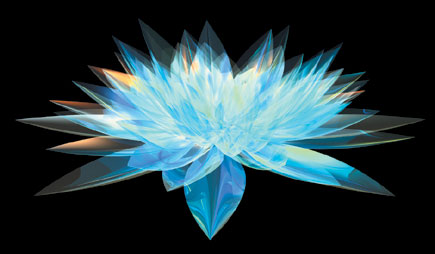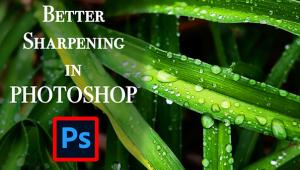Greg Vander Houwen:A Photoshop Pioneer Page 2
Eventually, he moved to Seattle and worked at several computer stores, where
he focused on what computers could produce graphically. At one computer store
in Seattle, Vander Houwen purchased equipment and gave customers information
on how to use computers to create graphics. Around 1988, he discovered "a
niche market," and developed a reputation--people who wanted to learn
more about computer-generated graphic arts sought him out. Eventually he worked
as a digital retoucher at a professional photo lab in Seattle.
Photoshop's Evolution
Software programs and computer equipment weren't as sophisticated as they
are now, he says. "But in 1989, things changed," as he found that
desktop computers, memory, video cards and computer programs had evolved to
the point where high-quality image editing was possible. Vander Houwen discovered
an Alpha version (.087) of Photoshop during this time. "It was impressive,"
he says, "and I started using it right away." This began Vander
Houwen's long and happy relationship with this innovative image-editing
program. "I think it's safe to say that very few people have used
Photoshop as much or as long as I have."
 |
|
|
He has helped to develop changes in this program throughout the years. Yet,
as recently as the early '90s, Vander Houwen says, "You couldn't
get people to pay much attention to you for knowing this stuff." Instead,
it was considered "an interesting toy."
After hours on his job, he created a digital work of art in this Alpha version
of Photoshop, and submitted it to Verbum magazine in 1990. It became his first
digital image to be published. Thus, Vander Houwen created one of Photoshop's
earliest works of art (although--looking back--he says he's
not sure that it was a great one).
 |
|
|
He recalls that the digital-imaging community at this time was very small.
Nonetheless, he pursued computer art via Photoshop and other programs. He submitted
work to various publications and was invited to participate in the first Adobe
Digital Masters show at the Ansel Adams Gallery in San Francisco, in 1993. "There
was a group of 10 or 15 of us that showed work," Vander Houwen recalls.
Photoshop produced a "deluxe" edition on CD, a new technology in
those days. It included the "Digital Masters" gallery, which featured
Vander Houwen's work. In the program's next revision, Photoshop
switched over to the CD version entirely. The Photoshop CD continued to include
Vander Houwen's works for a number of years in its gallery.
 |
|
|
As one who got involved with Photoshop on the ground floor--so to speak--he's
done alpha and beta testing for new revisions of this program. "It's
nice to have some input with the tools I'm using," he comments.
Without a formal education in digital imaging, he's done amazingly well.
"I love [Photoshop] enough that I would use it even if I wasn't
being paid," he says. Besides, he points out, back when he was learning
this program on his own, there weren't any classes available.
Creating Environments
As for the equipment Vander Houwen uses, he points out that "I could do
what I do on most people's home systems that are on the market today."
He uses an Apple Macintosh G4 with 2GB of memory, and 100 GB of hard drive space.
He also has a Microtek scanner and a Nikon Coolpix 950 camera. By his admission,
"I use the camera quite a bit, but I'm not really a professional
photographer. I'm an illustrator and artist that happens to use some captured
images." He says that he "builds images illustratively." His
artwork comprises composite images from photography, scanning and his own illustrations.
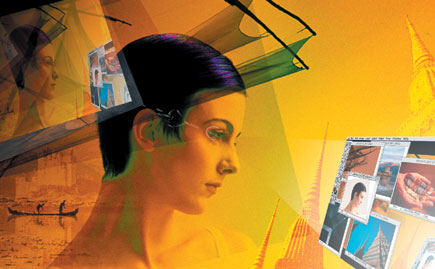 |
|
|
He also uses 3D packages "on occasion." One example is Vander
Houwen's "Woman With Flower" image, which was selected as
part of Adobe's "Magnificent 7" exhibit and appears on his
Website. "It was an honor to have been selected by Adobe as one of seven
artists to show what Photoshop 7 could do." He describes this image as
a fine-art piece: The woman was entirely illustrated in Photoshop, while the
flower was originally created in Strata Studio Pro, then enhanced in Photoshop.
"It's possibly the most complex Photoshop file I've created,"
notes Vander Houwen. He describes his process in doing this image, as well as
others on his Website. "These 3D packages enable you to photograph in
a virtual world," he says.
Vander Houwen says he's been building environments to photograph, which
he incorporates in his artwork. "By doing this, I have access to scenes
that wouldn't otherwise exist." According to him, this has been
a major focus. "I feel that I can make anything that I can imagine,"
he says, adding that he's developed a particular style some time ago.
For another early work of art, he wanted to "photograph" a ring
floating in an outdoor environment. He built a cube in 3D, painted a sky on
its interior walls, and then placed the ring in the cube "so that it would
look like it was reflecting the sky." Vander Houwen's resulting
image was so successful, he sent it along with a letter to Strata, the makers
of the 3D software he used. He mentioned that was using their software as a
"Virtual Studio" where he could create environments, adjust lighting,
and do photography. Soon afterward, they took on the name, "Strata, the
virtual studio company." Currently, he is using Maya, a powerful 3D program
used in the film and gaming industries. He comments, "Technically, I'd
like to become as proficient in 3D as I am in 2D." Again, it appears that
he's learning quickly on his own: "I'm back to school--and
hope I never leave."
Another interest that he hopes to develop in the future is the creation of "personal
avatars," or personal persona on the Web. Vander Houwen calls it "an
interactive personal representation of yourself." He describes it as way
to take form in a virtual community. (In a limited way we do this today via
our e-mail representation, or handles.) "It's not in the public
eye now, but will be in the next few years," he believes. "It's
starting to show up in online games and virtual communities. We'll be
selecting what our persona looks like with clothing, jewelry, etc. for meetings,
dates and entertainment events. To a great degree, these things have yet to
be made, and I think there will be a huge demand--after all, everyone likes
to look good."
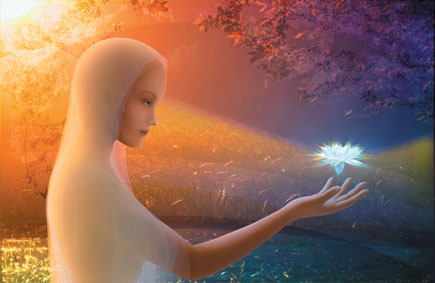 |
|
|
|
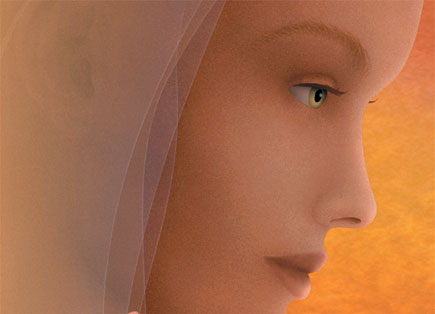 |
|
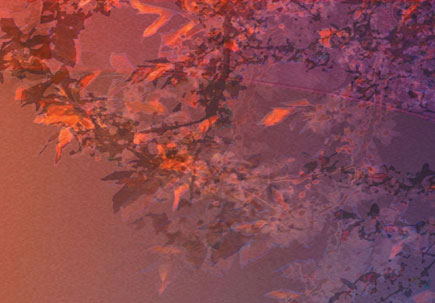 |
|
Vander Houwen illustrated the female in "Woman With Flower" in Photoshop. The background is a combination of Vander Houwen's photos and illustrations. The flower was orginally modeled and rendered in Strata Studio Pro, then enhanced in Photoshop. |
Online Community
In addition to netcandy.com, Vander Houwen has a Website he built himself: www.photoshoptechniques.com,
geared towards Photoshop users. He started it originally to communicate with
his Photoshop-user friends, and says that it's become one of Photoshop's
busiest sites. It regularly outlines tips for Photoshop users, with instruction
via Quicktime movies. According to Vander Houwen, "I love teaching and
speaking to people, and this site enables me to reach thousands."
Some time ago, his daughter was hit by a falling tree. During her recovery,
Vander Houwen received about 30 "hand-made" Photoshop get-well cards
for her from Photoshoptechniques.com members. "It's the strength
of community," he beams. "There is a lot more than just Photoshop
going on there. We're a virtual family."
- Log in or register to post comments
